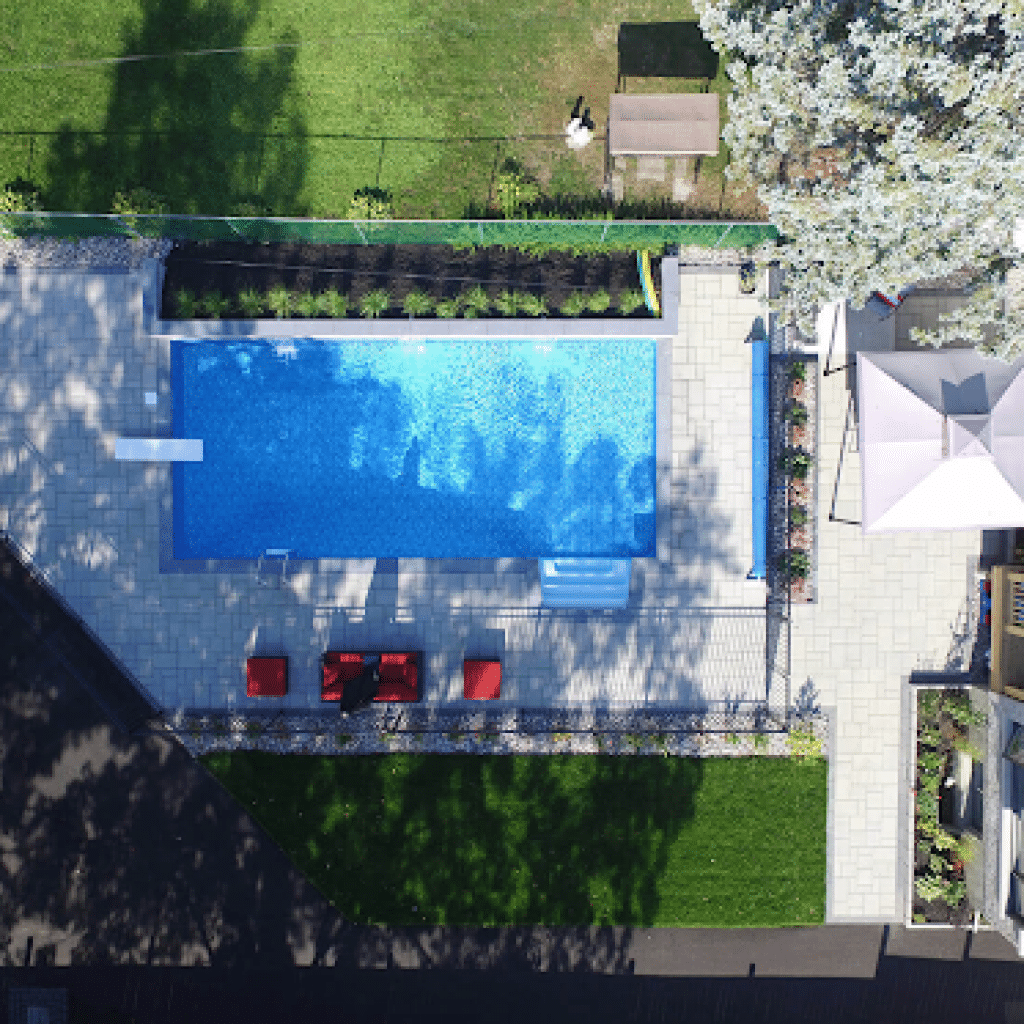Using Lines to Make Your Landscape Design “Pop”
In the pursuit of the perfect garden, you must verse yourself in the principles of landscape design. The first and foundational landscape design principle is the use of “lines.” They form the basis of your landscape, establishing boundaries and creating a sense of movement.
There are different types of lines, of course, each with its effects. This post will look at how you can incorporate lines effectively, both in your blueprint and your garden, for the most functional and aesthetic results possible.
Uses for Lines in Sustainable Landscape Design
Lines are essential components of a blueprint or landscape design. They are used to create all forms and patterns within the landscape.
From a functional standpoint, a line creates an edge or border between structures and materials. They also make the outlines or silhouettes of more complex shapes and forms. Even though lines are fundamental tools and building blocks for a landscape designer, what you can do with them is infinite.
Designers can use lines to establish various movements, shapes, and patterns in your landscape design.
Specific Uses of Lines in Landscape Design
- Create Patterns – Lines can be grouped, spaced apart, placed in a perpendicular or parallel arrangement, and much more – all of which establish patterns.
- Mark Forms – Lines, when drawn to create polygons and shapes, establish “forms,” which indicate the presence and positioning of features such as garden beds, pools, or patios.
- Establish Movement – Lines direct the eyes and create focal points, guiding onlookers where to look first, second, third, and so forth.
- Create Dominance – Lines separate objects from each other, create boundaries, and give designers and clients a sense of where certain features begin and end.
- Use Themes – Using certain types of lines (more on this below) and placing them in specific arrangements creates visual themes, whether deliberate or not.
Conceptually, these five uses might make sense, but it’s hard to visualize them just by reading about them. I will provide an example below to illustrate all five of these uses.
From the Back to Front Yard: Types of Lines in Landscape Design
A line by itself might not communicate much to an onlooker. However, the type of line drawn speaks volumes.
Different types of lines create their unique sense of movement. These lines’ presence and appearance have a physical effect on your garden’s appearance and an emotional impact on those looking at the garden.
There are four main types of lines: straight lines, curved lines, vertical lines, and horizontal lines.
Effects of Line Types in Landscape Design
- Straight Lines – The most obvious of the four, straight lines create a sense of forcefulness. They’re usually formal in symmetrical designs. They function like arrows since they guide the eye directly to a focal point.
They also create a direct pathway for the eyes to follow. Designers typically use straight lines to establish borders and boundaries. After I’ve used straight lines (in a diagonal application or in a very geometric way), I’ve heard from some clients that they would never have tried this on their own but were thrilled with the final result.
- Curved Lines – If straight lines represent orderliness and formality, then curved lines are the opposite. They are informal, radical, and typically asymmetrical. The sense of movement they evoke is the opposite of straight lines. Where straight lines guide the eye directly from point A to B, curved lines allow the eyes to meander and take a more scenic route.
- Vertical Lines – Vertical lines create a more immediate sense of movement, and their main effect is to direct the eyes to look up or down. They’re typically used to establish features or elements such as trees or tower-like structures.
- Horizontal Lines – Horizontal lines create a more relaxed sense of movement. As their name suggests, they direct the eyes to move left to right. They’re typically used to establish features such as pathways, walls and fences.
Naturally, your landscape will incorporate more than just one type of line use.
For example, you will most likely use straight lines to create boundaries and borders in your backyard. But you’ll also use vertical lines to establish where your plant material or trees may go.
Horizontal lines may establish where a walkway or a wall goes. You might even use a curved line to indicate a unique design pattern for some creative perennial borders.
Putting Your Use of Lines Together in Your Garden Design
Now that you understand how lines function within a landscape’s design, the question is, how do you make use of them yourself.
It might seem tricky if you are not a designer. However, once you’re able to identify what they look like before you put them on the page, the process is quite enjoyable.
Establish the End Goal First for Your Sustainable Garden
First off, start with a visual reference such as a web search or Pinterest photo of your dream garden. You can try to capture a mental image drawn within your imagination, but I don’t recommend this since what we see in our minds doesn’t always translate well on paper.
You can point out individual features you’d like to include in your landscape design with a photo. I even recommend compiling two or more images together since you might want to pull individual features from various landscape designs to make your own.
Identify the Features in Your Ideal Garden to Find Their “Lines”
Start picking out features in the design you like or incorporate directly into your landscape design. For example, if you want to include a pathway or a garden wall you saw in your design inspiration, that would be an example of a horizontal line.
Pay attention to the use of lines. Did you notice a specific pattern or theme? Do certain features seem to move in a particular direction?
You’ll also notice diagonal lines closer to the middle and bottom left of the image. They form a very angular border, one that probably captured your gaze and contributes to the trapezoidal shape of the lawn patch and pool deck itself.
This exercise aims to pinpoint the visual reference features you would like in your design and then note the lines used to construct them. If you notice anything that pleases you, don’t overthink it or try to reinvent it – simply note it and sketch it.
Start Sketching these Features, or Bring in a Landscape Architect
You might wonder where to begin on the page, where to start when sketching.
Before deciding what elements you want in particular in your garden, make a list. You can say you want just a pool, a patio, a garden bed, and a stone pathway.
The trick is knowing where to draw the lines on the page to indicate these features’ position.
You can start by forming a pathway of sorts, such as drawing your boundaries first. Or, if you know exactly where you’d want a feature, you can start with where it begins and where it ends. Then draw features around it. As a rule, I tend to start at the edges of a property and work inwards.
Working with a landscape designer can help you figure out the best way to place these elements in your garden design. That doesn’t mean that the landscape designer or architect will ultimately dictate where everything goes. They will simply guide you to make a few suggestions. Then use their artistic skill sets to layout where certain features are best suited.
When working with a landscape architect, it’s all about communication in the design process.
Looking for Landscape Ideas in Tennessee?
Paying attention to lines helps you lay the foundation for more intricate shapes. It also serves as a map for your most essential ideas.
If you’re working with a landscape designer, they will design lines to guide their creative process. They will also make recommendations to make your garden pop. The lines’ placement eliminates chaos and gives both you and a designer a workable blueprint you can execute.
Stay tuned for part 2 of our Principles of Landscape Design series, where we will talk about the use of forms in your landscape design. And check out my other article on design principles.
If you want to make your dream landscape a reality, book a consultation with me to get started! Like myself, a Landscape Architect can help create sustainable design solutions, water features, or include native plants and guide plant selection to give you ultimate curb appeal.







